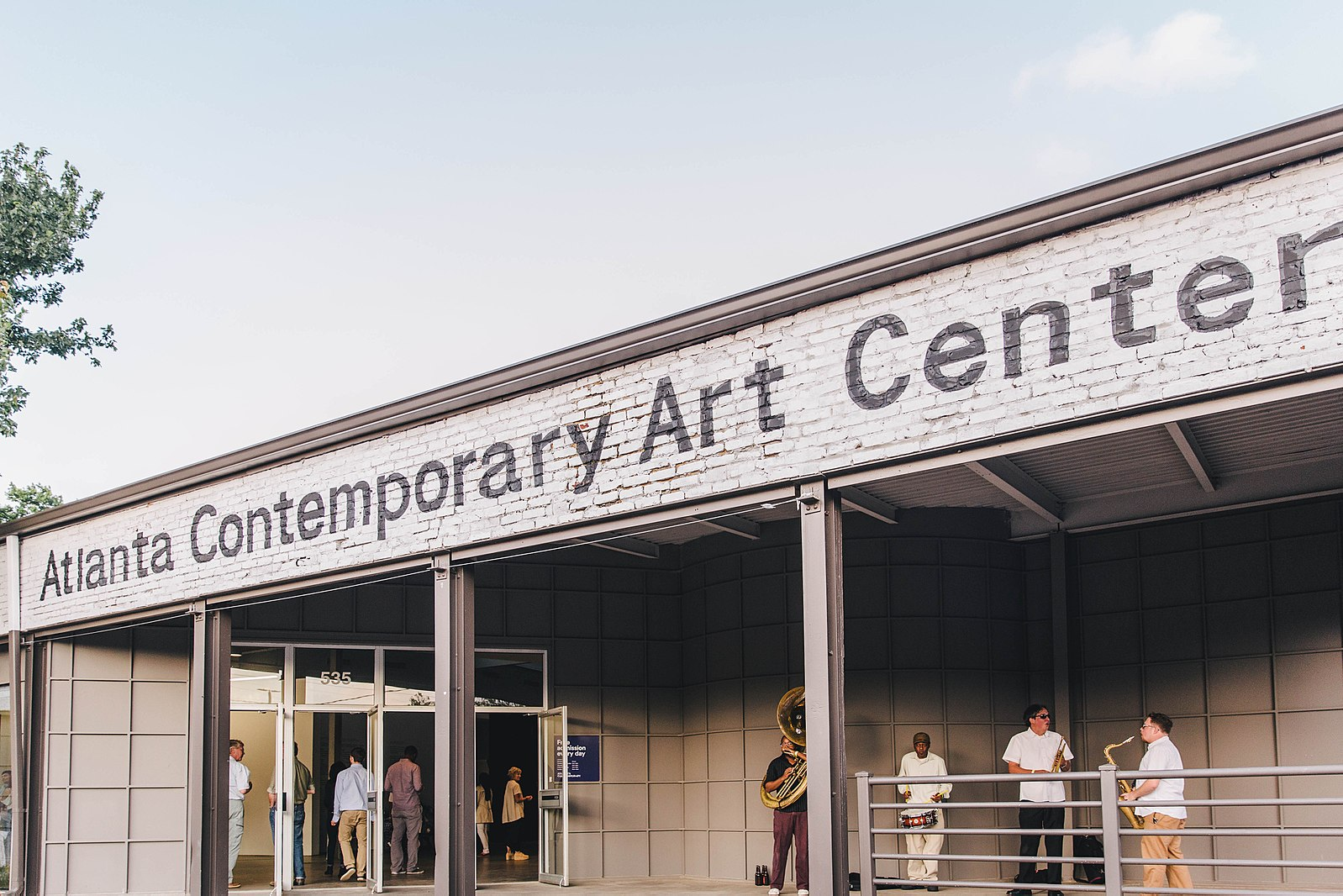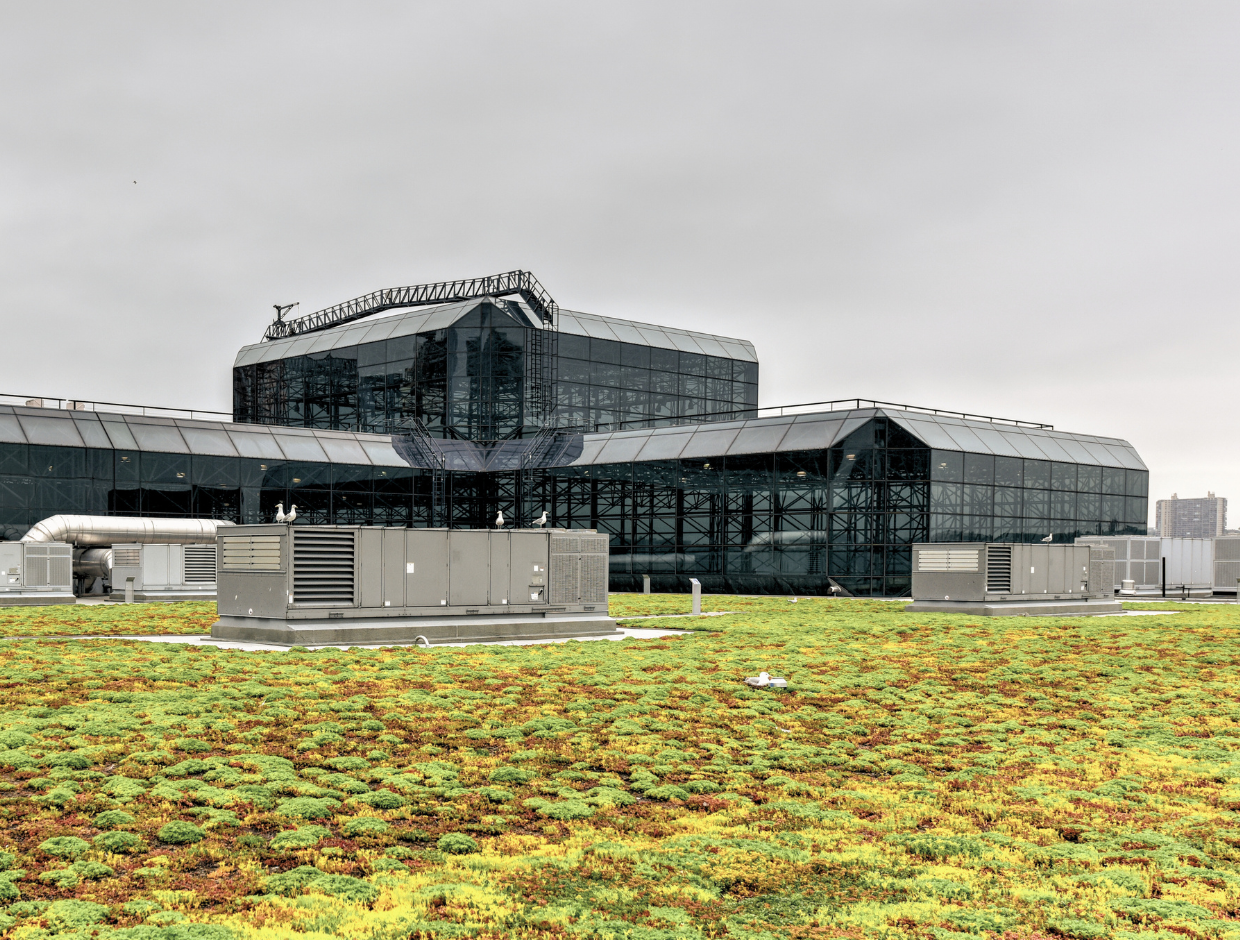

From APEX to Spelman College: Art Museums in Atlanta
Summary
Reflection Questions
Journal Prompt
Atlanta, Georgia offers a diverse array of art museums that cater to a wide range of artistic tastes and interests. From contemporary Black art to historical collections of international art, these museums not only serve as custodians of artistic heritage but also as vital centers for cultural education and appreciation. In this article, we will explore the many art museums Atlanta has to offer—delving into their unique collections, historical significance, and the roles they play in the city’s vibrant cultural landscape. From renowned institutions like the High Museum of Art to specialized venues like the Atlanta Contemporary Art Center, this exploration will offer insight into the rich tapestry of art available in Atlanta—highlighting how these institutions contribute to both the local and global art scene. Read on to learn more!
Atlanta as a Hub of Art and Material Culture


Atlanta, Georgia, has a rich and continuously evolving history in the arts, marked by a blend of traditional Southern culture and a growing embrace of modern artistic expressions. The city’s art history is characterized by its diverse community of artists, institutions, and cultural movements—reflecting both regional and international influences.
The early art scene in Atlanta was heavily influenced by the city’s position as a major hub in the American South. Traditional Southern art forms—including folk art and crafts—were prevalent and celebrated the region’s cultural heritage. This period saw a focus on landscape painting, portraiture, and religious themes—often reflecting the pastoral and religious character of the South. However, as Atlanta grew and diversified, particularly in the 20th century, so too did its art scene.
Atlanta in the Mid-Twentieth Century
The mid-20th century marked a significant shift in Atlanta’s art history—coinciding with the Civil Rights Movement. African-American artists in Atlanta began to gain more recognition—using their art as a means of cultural expression and political commentary. This era saw the emergence of vibrant artistic communities that challenged traditional boundaries and explored new forms of artistic expression. Galleries, institutions, and schools played a pivotal role in nurturing these communities—providing platforms for artists to showcase their work and engage with broader societal issues.
Atlanta Today
In recent decades, Atlanta’s art scene has become increasingly dynamic and diverse—reflecting the city’s growing status as a cultural metropolis. The city is home to emerging artists, self-taught art icons, and world-renowned established artists.
Contemporary art—including digital media, installations, and performance art—has flourished alongside traditional mediums. The city’s numerous art festivals, galleries, and exhibitions attract artists and enthusiasts from around the world—making Atlanta a key destination in the contemporary art world. The integration of art into public spaces—such as murals and sculptures—has further embedded the arts into the city’s identity.
Atlanta’s art history is a testament to the city’s continual evolution and its embrace of diverse artistic voices. From its traditional Southern roots to its current status as a hub for contemporary art, Atlanta’s art scene continues to grow and influence both the regional and international art landscapes.
The Best Art Museums in Atlanta, Georgia
APEX Museum
The APEX Museum highlights and celebrates the contributions of African Americans both in the United States and globally. This museum—through its array of exhibits and educational programs—provides a comprehensive look into the African-American experience—covering historical events, cultural developments, and notable achievements. By focusing on the African-American narrative, the APEX Museum not only educates its visitors about the past but also inspires future generations.
The museum’s exhibits are carefully curated to showcase a variety of themes—from the history of African civilizations to the African-American journey through slavery, civil rights, and contemporary achievements. The APEX Museum uses a combination of permanent and rotating exhibits, along with interactive installations, to engage visitors in a dynamic learning experience. This approach enables the museum to continuously refresh its offerings and remain relevant in the ever-evolving discourse of African-American history and culture. The museum boasts a comprehensive African art collection unparalleled in most other US museums.
As a cultural cornerstone in Atlanta, the APEX Museum also hosts a variety of community events, lectures, and workshops. These programs are designed to foster a deeper understanding and appreciation of African-American history and culture among the broader community. The museum’s commitment to education and cultural enrichment makes it a key destination for anyone seeking to understand the rich tapestry of African-American history and its profound impact on the world.
Atlanta Contemporary Art Center


The Atlanta Contemporary Art Center’s exhibitions are thoughtfully curated to reflect the current trends and dialogues in the contemporary art world—making it a dynamic and ever-changing space for art enthusiasts. The center’s focus on contemporary art provides a platform for emerging and established artists to present their work to a wider audience.
In addition to its exhibitions, the Atlanta Contemporary Art Center is committed to the education and development of artists and art collectors. The center offers a variety of educational programs, artist talks, and workshops, which are designed to engage the community and foster a deeper understanding of contemporary art. These programs provide valuable insights into the creative processes of artists and the intricacies of art collection—making the center a hub for learning and exploration in the field of contemporary art.
The Atlanta Contemporary Art Center’s role extends beyond just being an exhibition space. It actively contributes to the cultural fabric of Atlanta. Through its support of artists and engagement with the community, the center plays a crucial role in nurturing the city’s artistic landscape. Its commitment to showcasing diverse voices and perspectives in art makes it an important destination for anyone interested in the pulse of contemporary artistic expression.
Callanwolde Fine Arts Center
Callanwolde Fine Arts Center—set in a historic estate—provides a picturesque backdrop for a wide array of art exhibitions—showcasing the talents of local artists across various media. The center’s galleries feature everything from paintings and sculptures to multimedia installations—offering a diverse and enriching experience for visitors.
Beyond its role as an exhibition space, Callanwolde Fine Arts Center is deeply committed to arts education. The center offers a range of classes and workshops for all ages and skill levels—covering disciplines such as visual arts, dance, and music. These educational programs are designed to cultivate creativity and artistic skills in the community—making art accessible to everyone. The center’s inclusive approach to arts education fosters a vibrant and supportive environment for both aspiring and established artists.
Center for Puppetry Arts
The Center for Puppetry Arts is a unique cultural institution dedicated to the art of puppetry. It is one of the few centers in the world with a comprehensive focus on puppetry as a form of artistic expression. The center’s collection features an extensive array of puppets from various time periods and cultures—providing visitors with a global perspective on the art form. This collection not only showcases the diversity of puppetry but also highlights its historical and cultural significance.
The center’s commitment to education extends to its research and archival facilities, which offer resources for scholars and puppetry enthusiasts. These resources contribute to the understanding and appreciation of puppetry as an important cultural and artistic medium. Through its diverse collection, performances, and educational initiatives, the Center for Puppetry Arts plays a pivotal role in keeping the tradition of puppetry alive and relevant in the modern world.
Clark Atlanta University Art Museum
Clark Atlanta University Art Museum—within the historically Black Clark Atlanta University—is an institution specializing in African-American art. This museum’s collection offers a comprehensive view of African-American artistic achievement—spanning various periods and styles. The museum’s focus on African-American art provides a critical platform for artists of African descent—showcasing their contributions to the broader art world.
The museum’s collection includes works from the 19th century to the present—featuring a range of artistic expressions from traditional to contemporary styles. This diversity allows visitors to explore the evolution of African-American art and its influences over time. The museum also emphasizes the role of African-American artists in addressing social, political, and cultural issues through their work—providing a powerful insight into the African-American experience.
Apart from its permanent collection, Clark Atlanta University Art Museum also hosts temporary exhibitions and educational programs. These programs aim to engage the university community and the public in dialogues about African-American art and its significance in the broader context of American history and culture. The museum serves not only as a repository of art but also as an educational and cultural resource—contributing to the understanding and appreciation of African-American art and culture.
Ferst Center for the Arts
The Ferst Center for the Arts—located on the campus of the Georgia Institute of Technology—is a premier venue for contemporary art and photography. The center’s galleries feature a rotating selection of exhibitions—showcasing the work of both emerging and established artists. These exhibitions are carefully curated to reflect current trends and themes in contemporary art—providing a snapshot of the dynamic and evolving nature of the art world.
In addition to its visual art exhibitions, the Ferst Center for the Arts is also known for its performing arts programming. The center hosts a variety of performances, including music, dance, and theater—making it a multifaceted cultural destination. This integration of visual and performing arts under one roof creates a rich, interdisciplinary experience for visitors—highlighting the center’s commitment to diverse artistic expressions.
The Ferst Center for the Arts also plays an educational role—offering lectures, artist talks, and workshops. These programs provide valuable insights into the creative processes behind the artworks and performances—fostering a deeper understanding and appreciation of contemporary art among audiences. The center’s blend of exhibitions, performances, and educational initiatives makes it a key institution in Atlanta’s cultural scene—promoting engagement with the arts in a comprehensive and accessible manner.
Hammonds House Museum
The Hammonds House Museum in Atlanta is a significant cultural institution focusing on African-American fine art and the culture of the African diaspora. Housed in a historic Queen Anne-style house in the West End, this museum offers a unique blend of historical architecture and contemporary art. Its collection and exhibitions showcase a wide range of artistic expressions—from traditional to modern—highlighting the rich and diverse contributions of African-American artists.
The museum’s exhibitions are thoughtfully curated to explore themes relevant to the African-American experience and the broader African diaspora. These exhibitions not only display the artistic talent of African-American artists but also serve as platforms for discussions on cultural identity, history, and social issues. By focusing on such themes, the Hammonds House Museum plays a critical role in preserving and promoting the cultural heritage of African Americans.
In addition to its exhibitions, the Hammonds House Museum also hosts a variety of educational and cultural events, including artist talks, workshops, and community gatherings. These events are integral to the museum’s mission to engage and educate the public about African-American art and culture, fostering a sense of community and shared cultural understanding. The museum’s commitment to showcasing African-American art and its active role in the community make it an invaluable asset to Atlanta’s cultural landscape.
High Museum of Art
The High Museum of Art in Midtown Atlanta is recognized as the leading art museum in the Southeast. With its extensive and varied collection, the museum offers visitors a comprehensive look at art forms ranging from classic to contemporary. The museum’s collection includes significant works of 19th and 20th-century American art, European masterpieces, a growing collection of African American art, modern and contemporary art, photography, and African art—making it a key destination for art enthusiasts.
The High Museum of Art is renowned not only for its collections but also for its architecture and design. The building itself is a work of art—designed by noted architects Richard Meier and Renzo Piano—offering a visually striking environment that enhances the experience of the artworks displayed within. The museum’s layout and design facilitate an immersive and engaging exploration of its vast collections—making each visit a unique experience.
Michael C. Carlos Museum
The Michael C. Carlos Museum—located on the Emory University campus in Atlanta—is an esteemed institution housing art from ancient civilizations, sub-Saharan African art, and European and American works on paper. The museum’s collection offers a journey through time—showcasing artifacts and artworks that span thousands of years and multiple continents. This diverse collection provides visitors with insights into the art, history, and cultures of ancient civilizations.
One of the highlights of the Carlos Museum is its extensive collection of ancient Egyptian, Greek, and Roman artifacts—including mummies, pottery, and sculptures. These pieces not only represent artistic achievements but also serve as valuable historical records. The museum’s sub-Saharan African collection features traditional and contemporary works—offering a glimpse into the rich artistic traditions of the region. Additionally, the museum’s collection of European and American works on paper—showcases the evolution of artistic styles and techniques.
Millennium Gate


The Millennium Gate Museum in Atlanta’s Atlantic Station is a monument and museum dedicated to showcasing Georgia’s rich history, architecture, culture, and philanthropic heritage. This museum—housed within a classical arch reminiscent of the Roman Triumphal arches—stands as a symbol of peace and unity. Its exhibitions are carefully curated to offer an in-depth look into the historical developments and cultural milestones that have shaped the state of Georgia and, by extension, the United States.
Inside, the museum’s galleries feature interactive displays, artifacts, and exhibits that narrate Georgia’s history from 1733 to the present. These exhibits cover a wide range of topics, including the founding of the state, its involvement in the Civil War, and the role it has played in modern American history. The museum’s approach to storytelling combines historical artifacts with modern technology—creating an engaging and educational experience for visitors.
The Millennium Gate also places a strong emphasis on the architectural and philanthropic history of Georgia. By highlighting the architectural evolution of the region and showcasing the philanthropic efforts of its citizens, the museum provides a unique perspective on the state’s development. The museum’s focus on these aspects not only educates visitors about Georgia’s past but also inspires a sense of pride and community among the residents.
Museum of Contemporary Art of Georgia
The Museum of Contemporary Art of Georgia (MOCA GA) in Atlanta is dedicated to supporting and showcasing contemporary artists from the state of Georgia. This museum serves as a vital platform for local artists—offering a space to present their work and gain recognition in the broader art world. MOCA GA’s commitment to highlighting Georgia artists ensures that the state’s contemporary art scene is both celebrated and nurtured.
MOCA GA’s collection includes an extensive archive of hundreds of works by Georgia artists—encompassing various mediums such as painting, sculpture, print, and photography. This diverse collection reflects the richness and diversity of contemporary art in Georgia—showcasing a range of styles and perspectives. The museum also hosts rotating exhibitions, which provide an opportunity for emerging and established artists to display their latest works—fostering a dynamic and evolving artistic environment.
In addition to its exhibitions, MOCA GA is committed to education and community engagement. The museum offers a variety of educational programs, artist talks, and workshops—designed to engage the public and enhance their understanding of contemporary art. These programs create a dialogue between artists and the community—promoting a deeper appreciation of the arts and encouraging public participation in the cultural life of Georgia.
Museum of Design Atlanta
The Museum of Design Atlanta (MODA), located in Midtown Atlanta, is the only museum in the Southeast dedicated exclusively to the study and celebration of all forms of design. MODA’s exhibitions and programs focus on various aspects of design, including architecture, product design, interior design, furniture design, graphic design, and fashion. By exploring these diverse fields, MODA provides a comprehensive view of design’s impact on our daily lives and the broader world.
MODA’s exhibitions are thoughtfully curated to showcase the latest trends and innovations in design, as well as to explore the historical and cultural contexts of various design movements. The museum’s approach to exhibitions is interactive and immersive—encouraging visitors to engage with design in a hands-on manner. This interactive approach makes MODA a dynamic space that inspires creativity and critical thinking about the role of design in society.
Furthermore, MODA is deeply committed to education, offering a range of programs, workshops, and lectures that cater to all ages. These educational initiatives are designed to foster an appreciation for design and to inspire the next generation of designers. Through its exhibitions and educational programs, MODA plays a crucial role in promoting the understanding and appreciation of design in the Southeast and beyond.
National Museum of Decorative Painting
This next museum is an honorable mention, as it closed in 2018. We have included it here because much of its collection is still available to view online. The National Museum of Decorative Painting in Atlanta held a rich collection of decorative art pieces from around the world—spanning various time periods. The collection includes a wide array of items—such as historic and contemporary decorative arts objects—showcasing the diversity and evolution of decorative painting as an art form. The museum’s focus on this specific niche allows visitors to explore an often-overlooked aspect of the art world.
Omenala Griot Afrocentric Teaching Museum
The Omenala Griot Afrocentric Teaching Museum in Atlanta’s West End is an institution dedicated to educating the public about African and African American culture and history. This museum uses a variety of mediums—including art, music, storytelling, and artifacts, to convey the richness of African and African American heritage. The museum’s Afrocentric approach provides a unique perspective—emphasizing the contributions and experiences of people of African descent.
The museum’s exhibitions and programs are designed to be educational and immersive. They offer visitors an in-depth look into various aspects of African and African-American culture—from traditional African societies to the contemporary African-American experience. By focusing on an Afrocentric perspective, the museum plays a vital role in preserving and sharing the history and culture of the African diaspora.
Omenala Griot Afrocentric Teaching Museum also serves as a community center—hosting a range of events, workshops, and cultural celebrations. These events are crucial in promoting cultural understanding and community engagement. The museum’s commitment to education and cultural enrichment makes it an important cultural resource in Atlanta—fostering a deeper appreciation of African and African American heritage.
Robert C. Williams Paper Museum
The Robert C. Williams Paper Museum at the Georgia Institute of Technology is a unique institution dedicated to the art, history, and technology of paper and papermaking. The museum’s collection includes an array of paper-related artifacts—from ancient manuscripts to modern paper art. The exhibits explore the development of papermaking, its role in history, and its impact on society.
One of the key features of the museum is its focus on the artistic aspects of paper. The museum showcases changing exhibits of paper art—demonstrating the versatility and creativity of this medium. These exhibits provide insight into how artists use paper not just as a canvas but as a material for constructing intricate and expressive works of art. The museum also educates visitors about the scientific and technological aspects of papermaking—including the processes involved in creating different types of paper.
In addition to its exhibits, the Robert C. Williams Paper Museum offers educational programs and workshops. These programs aim to engage visitors of all ages in the art and science of papermaking—offering hands-on experiences in creating paper. The museum’s combination of art, history, and technology makes it a unique and valuable educational resource—contributing to the cultural and academic life of Atlanta.
Spelman College Museum of Fine Art
The Spelman College Museum of Fine Art—located within Spelman College in Atlanta—is a leading institution specializing in art by and about women of the African diaspora. This museum focuses on showcasing works that address issues of race, gender, and social justice—providing a platform for underrepresented voices in the art world. The museum’s collection and exhibitions offer a critical exploration of the experiences and perspectives of women of African descent.
The museum’s exhibitions are curated to challenge and expand conventional narratives about African-American art and women artists. By showcasing a diverse range of artistic expressions, the museum highlights the complexity and richness of the African diaspora’s artistic heritage. The Spelman College Museum of Fine Art plays a crucial role in fostering an understanding of the contributions of women artists of color to the broader art historical canon.
In addition to its exhibitions, the museum is actively involved in education and outreach. It hosts a variety of programs—including lectures, artist talks, and community events,—designed to engage the college community and the public in conversations about art, identity, and society. The museum’s commitment to education—coupled with its focus on women artists of the African diaspora—makes it an important cultural institution—not only for Spelman College but for the Atlanta community and beyond.
Final Thoughts on Atlanta Art Museums


The city’s commitment to the arts is exemplified not only through its specialized art museums but also through broader institutions like the Atlanta Art Association, the Atlanta History Museum, and the Atlanta History Center. These entities play a crucial role in preserving the city’s artistic legacy while promoting contemporary artistic endeavors. They serve as custodians of Atlanta’s historical narrative and as active participants in shaping its cultural future. Together, these museums and institutions underscore Atlanta’s position as a vibrant center for the arts—celebrating a past deeply rooted in tradition while eagerly embracing the innovations of the modern art world.








